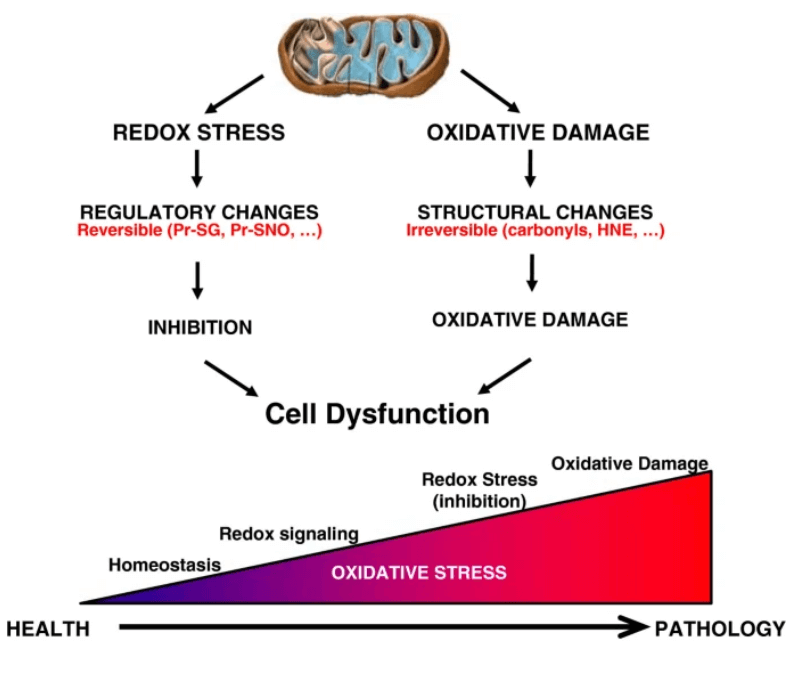Longevity is commonly defined as ‘a greater duration of life’. The etymology of the word longevity is derived from the Latin word ‘longaevitās’ which is a combination of the words ‘longus’ (which means long) and ‘aevum’ (which means age). However, the concept of longevity is comparative in nature and relative to the average lifespan of a species.

Highlights
- Longevity is commonly defined as a greater duration of life. The concept of longevity is comparative in nature and relative to the average lifespan of a species,
- Ageing is a series of multiple processes. These processes result in the familiar signs of ageing and ultimately to the development of age-related diseases,
- Longevity/ageing in humans depends on multiple factors such as mitochondrial DNA damage/oxidative stress, glycation, telomere shortening, cell senescence, inflammation and the mTor protein.
Ageing is a series of multiple processes. These processes result in the familiar signs of ageing and ultimately to the development of age-related diseases that could affect lifespan. These processes include:
- Direct damage to the physiological processes;
- Accumulation of cellular waste;
- Loss of information;
- Errors and or/ imperfect repairs; and/or
- Increased inflammatory responses.
While ageing cannot be stopped entirely, certain factors can speed up or slow it down.
Longevity in humans
This depends on processes that are associated with the biological mechanisms of ageing such as:
1. Mitochondrial DNA damage/oxidative stress
- This process takes place as a result of imbalances or excesses of antioxidants and free radicals within the human body.
- Prof. Denham Harman, a pioneer and founder of the ‘American Aging Association’, in 1956, was the first to propose the ‘Free Radical Theory’ of ageing, wherein he suggested that free radical in the human body resulted in the accumulation of damages in cellular macromolecules as a primary contributor to ageing and a an important determinant in an individual’s lifespan.
- Based on the ‘Free Radical Theory’ of ageing, multiple scientists and researchers have attempted to lengthen life spans through the manipulation of genes that control the ‘antioxidant cellular system. However, these studies and experiments have been conflicting and inconclusive.

2. Glycation
- Glycation is defined as the spontaneous non-enzymatic reaction as a result of the interaction of free reducing sugars along with groups of free amino proteins, DNA, and/or lipids that result in the formation of amadori products. These go through a multitude of rearrangement reactions and irreversible dehydration, resulting in the formation of advanced glycation end products (commonly known as AGE(s)). These glycation reactions are overly accelerated in the presence of hyperglycemia and tissue oxidative stress. The consequences of this mechanism results in rapid ageing and the pathogenesis of diabetic complications.
Telomere shortening
- Telomeres are the caps present at the end of the chromosomes that protect the cell DNA from end-to-end fusions, recombination and shortening. These telomeres are constantly wearing down as an individual ages, until they become so short that the body’s cell DNA cannot be protected. Many studies point out that telomere shortening is associated with ageing. However, the variation in the speed of the telomere shortening varies from person to person and unique contributing factors.
- The rate at which the tTelomeres are shortened also differs between males and females. One scientific study concluded that in a group of 48-year-old men and women, there was a considerable difference in the length of the telomeres. It was specifically observed that telomere shortening was faster in males than in females.
- Certain external variable factors can result in the acceleration of telomere shortening, such as smoking, mental stress and/or working conditions, as well as poor lifestyles and health (i.e., obesity, cardiovascular diseases, inflammation, etc.).
- In a high-level stress group, telomerase activity is 48% lower than in subjects in the group with lower levels of stress. When there is a chronic decrease in telomerase activity, it heavily contributes to the acceleration of telomere shortening.
- All of these factors may impact the lifespan of the cells as well as the physiological age.
Cell senescence
- Senescence is the process of growing old, wherein a cell ages and cell division (mitosis) ceases for good, though the cell does not die. It’s distinctly defined as a period/ phase of gradual decline that follows an organism’s development phase. It is generally observed that cell senescence in humans begins during the 20s, (peak physical strength), and continues throughout their life.
- Over time, a large portion of these senescent cells build up in the body’s tissues, and they remain active and release damaging substances that may result in cell inflammation and damage neighbouring healthy cells.
- When an organism’s cells lose the capacity for mitosis as a result of damage to DNA and/or the shortening of the telomeres, it further results in a transformation that brings about destruction or decline. The organism’s cells either go into ‘senescence’ and/or self-destruct (apoptosis). The eventual end result is the death of the organism’s cell, which is a standard part of the organism’s biological functioning and a regular occurrence in the organism’s body.
- While it is accepted that cell senescence might be a positive thing, as cells are perpetually replacing themselves, the organism’s body eventually goes into a stage of decline which is called organismal senescence.
Inflammation
- Inflammation drives all diseases, and it can ignite a long list of disorders, including arthritis, atherosclerosis, blindness, asthma, diabetes, cancer and possibly, autism and various other mental illnesses.
- The perception of inflammation as a normal function of ageing has been thoroughly documented and characterized in multiple epidemiologic studies. The levels of inflammatory mediators generally rise with ageing, even in the lack of acute infections and/or other physiologic stress. While these levels are still within the sub-acute range, chronic inflammation gives rise to a multitude of ageing-related issues.
- While there does not appear to be a ‘cure’ for the complex process of ageing, it should be possible to facilitate successful ageing, without the critical loss of mental and/or physical function and the general lack of ailments. There are critical lifestyle changes and/or potential interventions that are able to slow down certain processes, which are primarily through the prevention and reduction of chronic inflammation resulting in the stalling of ageing activities. Scientific studies in the fields of lifestyle interventions are presently underway to promote a better preservation of function and ageing.

mTOR
- mTOR is a protein kinase (an enzyme that modifies other proteins) that regulates cell growth and metabolism. It’s defined as a complex pathway crucial for multiple cellular processes. Thus, in short, it’s an important survival apparatus that analyzes and signals the growth of the organism’s body and cells during periods of plenty and the signal to stop the growth of the organism’s body and cell when food/nutrition is scarce.
- mTOR is known as the master anabolic regulator, which organizes various other nutrient sensors, i.e., leptin, insulin, and IGF-1 (which is an insulin-like growth factor), growth development hormone, muscle-building, healing and bone strengthening, depending on the body’s requirements.
- mTOR can be activated through exercise. Exercise has been observed to increase mTOR levels in the brain, heart and muscles, but it also inhibits mTOR in the liver and fat cells. Upon its activation in the individual’s brain, it helps to increase learning and memory functions. Its inhibition in fat and liver cells could be one of the reasons that exercise is beneficial for these organs.
Conclusion
While there’s no ‘cure’ for ageing as such, it is important to know the factors that affect your longevity and speed up the ageing process, so that you can do your best to live a healthy and long life. Similarly, knowing about processes that slow down ageing helps you be fitter for longer.
Disclaimer: The contents of this article are for general information and educational purposes only. It neither provides any medical advice nor intends to substitute professional medical opinion on the treatment, diagnosis, prevention or alleviation of any disease, disorder or disability. Always consult with your doctor or qualified healthcare professional about your health condition and/or concerns before undertaking a new healthcare regimen including making any dietary or lifestyle changes.
References








